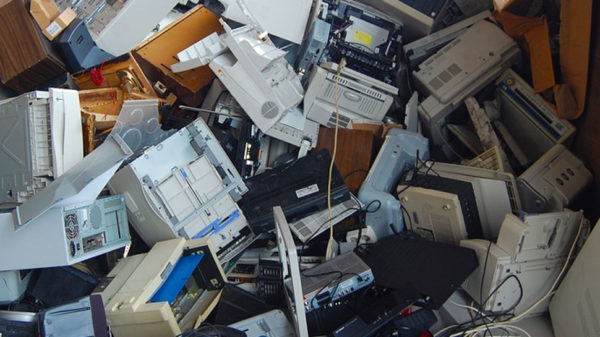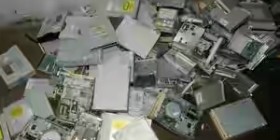Despite the government`s emphasis on Swachch Bharat Abhiyaan and Smart Cities project, India continues to be among the top five countries generating e-waste, an ASSOCHAM-NEC recent study said here on Monday.
The other countries topping the chart of e-waste generation are China, USA, Japan and Germany. The study was published coinciding with “Environment Day” (June 5).
In India, Maharashtra contributes the largest e-waste of 19.8 percent but recycles only about 47,810 TPA (tonnes per annum) whereas as its counterparts Tamil Nadu (13 percent) recycles about 52,427, Uttar Pradesh (10.1 percent) recycles about 86,130, West Bengal (9.8 percent), Delhi (9.5 percent), Karnataka (8.9 percent), Gujarat (8.8 percent) and Madhya Pradesh (7.6 percent), noted the joint study.
E-waste generated in India is about 2 million TPA, the quantity that is recycled is about 438,085 TPA. In states like Karnataka has 57 units with a capacity to process nearly 44,620 tonnes; Maharashtra, 32 units that can process 47,810 tonnes; Uttar Pradesh, 22 units to process 86,130 tonnes; Haryana, 16 units to process 49,981 tonnes; Tamil Nadu, 14 units for 52,427 tonnes, Gujarat, 12 units for 37,262 tonnes; Rajasthan, 10 units for 68,670 tonnes and Telangana, four units to process 11,800 tonnes.
E-waste typically includes discarded computer monitors, motherboards, Cathode Ray Tubes (CRT), Printed Circuit Board (PCB), mobile phones and chargers, compact discs, headphones, white goods such as Liquid Crystal Displays (LCD)/ Plasma televisions, air conditioners, refrigerators and so on.
“High and prolonged exposure to these chemicals/ pollutants emitted during unsafe e-waste recycling leads to damage of nervous systems, blood systems, kidneys and brain development, respiratory disorders, skin disorders, bronchitis, lung cancer, heart, liver, and spleen damage,” the study said.
“The sad part is that a mere 5 percent of India`s total e-waste gets recycled due to poor infrastructure, legislation and framework which lead to a waste of diminishing natural resources, irreparable damage of environment and health of the people working in industry. Over 95% of e-waste generated is managed by the unorganised sector and scrap dealers in this market, dismantle the disposed products instead of recycling it,” it added.
The global volume of e-waste generated is expected to reach 52.2 million tonnes or 6.8 kg/ inhabitant by 2021 from 44.7 million tones in 2016 at a compound annual growth rate of 20 percent, according to a joint study on `Electricals & Electronics Manufacturing in India,` conducted by the ASSOCHAM-NEC.
The total value of all raw materials present in e-waste is estimated at approximately $61.05 billion in 2016, which is more than the GDP of most countries in the world, pointed out the joint study.




Leave a reply